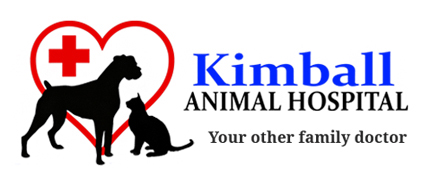Library
-
A cataract is an increase in opacity of the eye’s lens. Any type of inflammation or damage to the lens can lead to a cataract. The clinical signs of cataracts vary depending on the size of the cataract; many cataracts are asymptomatic at the time they are diagnosed during a veterinary exam. The ideal treatment for cataracts is surgery, but not all cats are candidates for surgical treatment. In these cases, anti-inflammatory medications may be used to prevent glaucoma and other secondary complications of cataracts.
-
A cesarean section is a surgery to remove kittens from the uterus and is most commonly performed as an emergency procedure when there is difficulty with natural birth. During the immediate recovery period, the mother and kittens must be closely monitored and begin eating/nursing within a few hours. If you have any concerns about their health, you should immediately have your veterinarian examine the kittens and their mother.
-
Cholangitis/cholangiohepatitis in cats refers to inflammation of the bile duct or a combination of inflammation of the bile duct, gallbladder, and surrounding liver tissue. The clinical signs, diagnosis, treatments, and prognosis of the conditions are outlined in this handout.
-
Ulcerative keratitis is inflammation in the cornea of the eye. The signs of ulcerative keratitis depend somewhat on the cause and how long the condition has been present. There are many potential causes of ulcerative keratitis, including trauma, infection, and abnormal tear production. Antibiotic ointment or drops will be prescribed and it is important to prevent additional trauma to the cornea. Superficial corneal ulcers typically heal within 5 to 7 days. Deeper or more complicated ulcers may take several weeks to heal and may require surgery in addition to medical treatment.
-
The word cruciate means 'to cross over' or 'form a cross'. The cruciate ligaments are two bands of fibrous tissue located in each knee joint. They connect the femur and tibia (the bones above and below the knee joint). The knee joint of the cat is one of the weakest in its body. When severe twisting of the knee joint occurs; the anterior or cranial cruciate ligament most commonly tears or breaks.
-
Cryosurgery is the application of extreme cold to destroy abnormal or diseased tissue. In animals, the technique is used to treat tumors in locations where conventional surgery would be difficult or impossible. Cryosurgery is sometimes also used for the removal of aberrant or extra eyelashes (distichiasis).
-
The diaphragm is the muscular partition that separates the abdomen and the chest. Tearing or disruption of this thin muscle is called a diaphragmatic hernia or diaphragmatic rupture. The most common cause of diaphragmatic hernia is blunt force trauma.
-
Ear canal tumors are abnormal growths that can develop from any part of the ear canal (the skin, the glands of the skin that produce earwax and oil, and the underlying connective tissues, muscles, and bones). Initially, these tumors may appear as one or more pink, white, or purple nodular masses in the ear canal. If benign, they may grow to a certain size and may or may not be problematic. If malignant, they may grow, ulcerate (break open) and bleed, and nearly always become infected, causing recurrent or chronic ear infections. The treatment of choice for ear canal tumors is surgical excision.
-
Alveolar osteitis, also called expansile osteitis, is a relatively common condition that results from chronic periodontal disease in cats. It is painful and can interfere with grooming and eating. If this disorder is detected early, it may be possible to treat the disease without tooth extraction by performing thorough periodontal therapy (dental cleaning and scaling).
-
An FHO, or femoral head ostectomy, is a surgical procedure that aims to restore pain-free mobility to a diseased or damaged hip by removing the head and neck of the femur (the long leg bone or thighbone). This procedure is commonly recommended for cats, especially those who are at a healthy weight. Active cats often experience better results with FHO than less-active cats. It is important to follow your veterinarian's post-operative instructions. Most cats will show signs of complete recovery approximately six weeks post-operatively.

